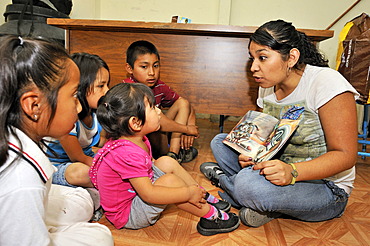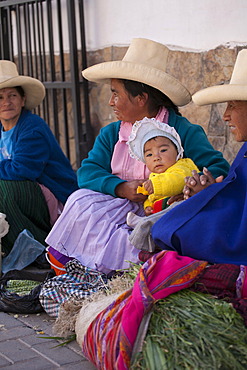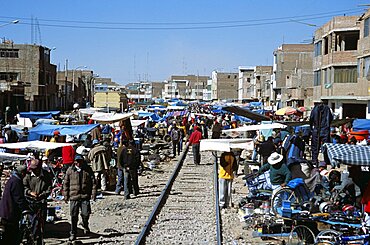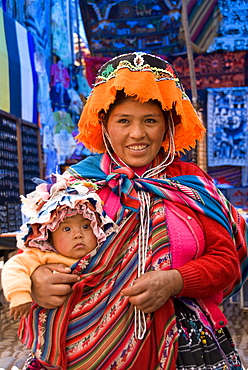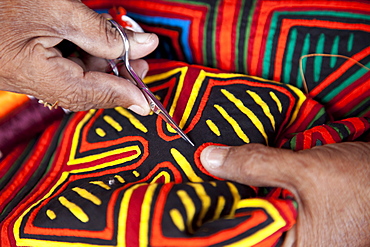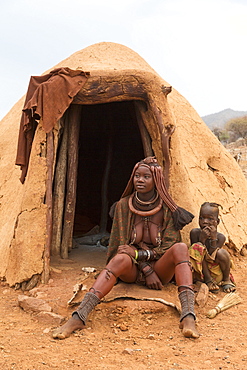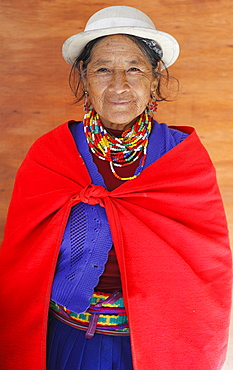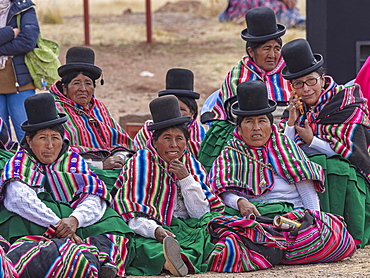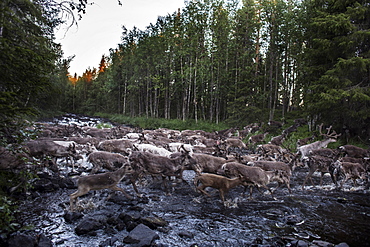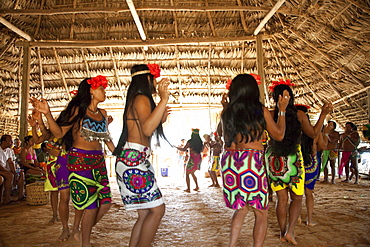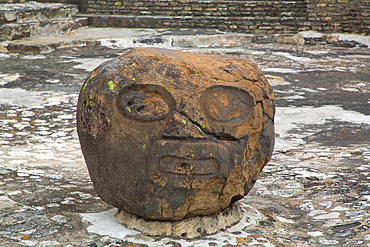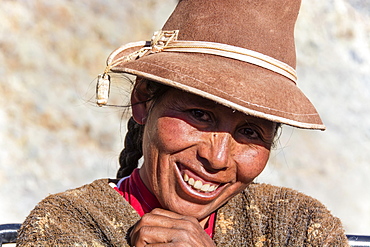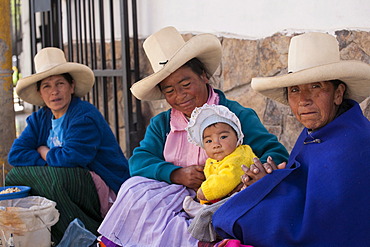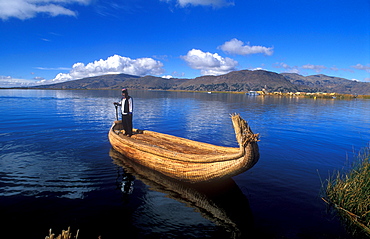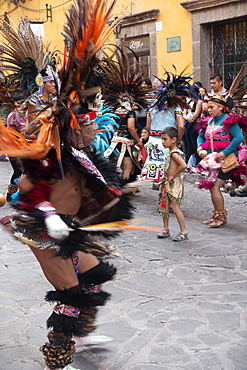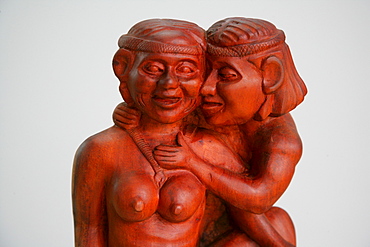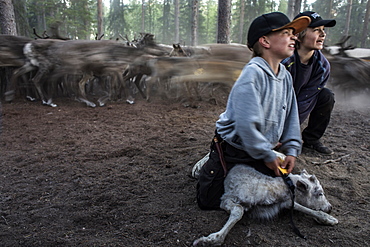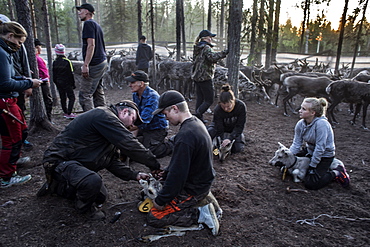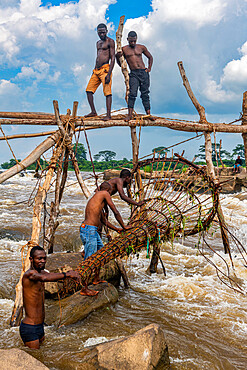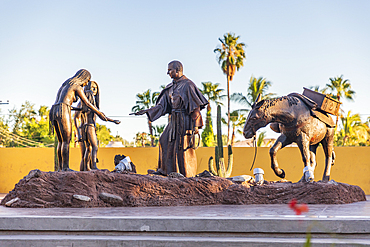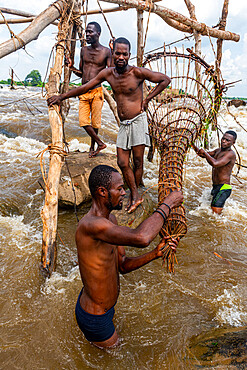Recent searches
Loading...
1176-253 - A Pataxo indigenous Brazilian boy from southern Bahia in traditional dress, Bahia, Brazil, South America
581-125 - Portrait of Sami girls and woman, Lapps, in traditional costume for indigenous tribes meeting, at Karesuando, Sweden, Scandinavia, Europe
142-3323 - Portrait of indigenous woman holding tourist's camera, Thar Desert, near Jaisalmer, Rajasthan, India, Asia
832-368940 - Child care worker of the Mexican non-governmental organization CIDES reading a picture book to indigenous children in a slum, Ciudad de Mexico, Mexico City, Mexico, Central America
832-373573 - Indigenous street vendors with a child, Baños del Inca, Peru, South America
1176-459 - Indigenous White Karen (Kayin) hill tribe villager cooking at a traditional stove in a mountain village near Doi Inthanon, Chiang Mai, Thailand, Southeast Asia, Asia
763-319 - Otavalo Market, one of Latin America's most famous indigenous markets, with livestock, produce, textiles and crafts north of Quito, Ecuador
805-760 - Detail of 18th century decoration in indigenous cement on brickwork in the Talatal Ghar Ahom Palace, Rangpur, Sivasagar, Assam, India, Asia
1218-377 - Two indigenous Toltec men performing a sunrise ceremony on the beach of Tulum, Yucatan Peninsula, Mexico, North America
797-1163 - KENYA Indigenous People Samburu girl Tribal People
797-3488 - COLOMBIA Vaupes Region Tukano Tribe Boy playing the carizu / panpipes at the maloca s river port on the rio Piraparana Tukano / Makuna Indigenous Tribes rio Piraparana North West Amazonia Amazon American Colombian South America Vuapes Columbia Hispanic Indegent Latin America Latino Vaupes Tukano Tucano Turkano
797-3523 - PERU Puno Administrative Department Lake Titicaca Aymara dancer dressed in her traditional costume an Aymara girl performs a folk dance on the shore of Lake Titicaca Indigenous people
797-3949 - BRAZIL Mato Grosso Indigenous Park of the Xingu Young Panara girls applying red karajuru face and body paint in preparation for dance. Both wearing multiple strands of blue red and yellow beads across upper body. Formally known as Kreen-Akrore Krenhakarore Krenakore Krenakarore Amazon American Brasil Brazilian Indegent Kids Kreen Akore Latin America Latino South America Immature
797-3950 - BRAZIL Mato Grosso Indigenous Park of the Xingu Young Panara women applying red karajuru face and body paint in preparation for dance. Formally known as Kreen-Akrore Krenhakarore Krenakore Krenakarore Amazon American Brasil Brazilian Female Woman Girl Lady Indegent Kreen Akore Latin America Latino South America Female Women Girl Lady Immature
797-3953 - BRAZIL Mato Grosso Indigenous Park of the Xingu Panara women painted with red karajuru and wearing multi-strands of beads across upper body and long strips of plant fibres tied around upper arms in preparation for dance. Formally known as Kreen-Akrore Krenhakarore Krenakore Krenakarore Amazon American Brasil Brazilian Female Women Girl Lady Indegent Kreen Akore Latin America Latino South America Female Woman Girl Lady Immature
797-3695 - PERU Juliaca Passing through the town during Puno to Cusco Perurail train journey. Cuzco Travel Tourism Holiday Vacation Explore Recreation Leisure Sightseeing Tourist Attraction Tour Destination Juliaca Cuzco Peru Peruvian South Southern America Latin Busy Culture Cultural Traditional Tradition People Visitors Locals Railway Railways Track Lines Line Rails Several Many Numerous Journey Market Marketplace Stalls Customers Stallholders Ramshackle Untidy Messy Ethnic Native Indigenous Unusual Different Danger Dangerous Beside Health Safety Vivid Vibrant Homes Residence Houses Abode Dwellings Housing Apartments Accommodation Slums Telegraph Wires Community Town Township Neighbourhood Residents Inhabitants Buildings Dilapidated Shopping Shoppers Poor Poverty Needy Deprived Deprivation Impoverished Hardship Calendar American South America
797-3954 - BRAZIL Mato Grosso Indigenous Park of the Xingu Panara men wearing crowns or head-dresses of feathers encircled by women painted with red karajuru and with long strips of plant fibres tied around upper arms during dance. Formally known as Kreen-Akrore Krenhakarore Krenakore Krenakarore Amazon American Brasil Brazilian Female Woman Girl Lady Indegent Kreen Akore Latin America Latino Male Man Guy South America Female Women Girl Lady Male Men Guy
797-3964 - COLOMBIA Choco Embera Indigenous People Embera man using single oar to steer wooden dug out canoe along rio Baudo. Pacific coastal region boat piragua tribe
797-3965 - COLOMBIA Choco Embera Indigenous People Hueso Embera family head using axe to fell large tree to make family dug-out canoe. Pacific coastal region tribe
797-3966 - COLOMBIA Choco Embera Indigenous People Embera man using axe or adze . to hollow out dug out canoe from large felled hardwood tree.Once completed canoe is dragged through forest to riverside home where final shaping takes place Pacific coastal region boat canoa tribe American Colombian Colombia Hispanic Indegent Latin America Latino Male Men Guy South America Pacific coastal region boat piragua tribe American Colombian Columbia Hispanic Indegent Latin America Latino Male Men Guy South America Male Man Guy One individual Solo Lone Solitary 1 Single unitary
801-30 - Indigenous mother with child in traditionally colorful dress, Pisac, Sacred Valley, Peru, South America
817-16212 - Indigenous man with blowpipe in hand, Yaguas Community, Amazonas, Peru.
825-72 - Kuna indigenous woman sewing a mola in the San Blas Islands, Panama, Central America
1131-238 - Indigenous man wearing a feather headdress, Quito, Pichincha Province, Ecuador, South America
869-865 - South America Brazil people man native indigenous gaucho cowboy riding Pantaneiro horse crossing water driving cattle
1175-918 - A mother and her children in a Himba village, indigenous tribe, Kunene, Namibia
1175-922 - A mother and child in a Himba village, indigenous tribe, Kunene, Namibia
832-137197 - Aboriginal people, indigenous people, mural, Museo Domo museum, cultural center, Coquimbo, La Serena, Norte Chico, northern Chile, Chile, South America
817-292756 - costume, cultural, culture, daytime, face, faces, holiday, indigenous, island, man, Maori, Maoris, model, model rele. costume, cultural, culture, daytime, face, faces, holiday, indigenous, island, man, Maori, Maoris, model, model rele
817-292755 - costume, cultural, culture, daytime, face, faces, holiday, house, indigenous, island, man, Maori, Maoris, meeting, M. costume, cultural, culture, daytime, face, faces, holiday, house, indigenous, island, man, Maori, Maoris, meeting, M
1113-8044 - Indigenous woman of the Uros people in front of a reef hut, Lake Titicaca, Peru, South America
1113-8007 - Indigenous girl from Zumbahua, Ecuador, South America
1116-12132 - Llama (Lama glama), Jatun Yampara Indigenous Community, Chuquisaca Department, Bolivia
857-38441 - A woman from an indigenous community in Guatemala weaving while wearing an indigenous dress at work in Antigua, Guatemala.
797-10905 - Peru, Indigenous People, Mother and baby in traditional dress with a lady making yarn and infant holding mobile phone.
797-10904 - Peru, Indigenous People, Woman with baby in traditional dress.
797-10906 - Peru, Indigenous People, Young woman using a Cell Phone.
1176-463 - Indigenous White Karen (Kayin) hill tribe villager cooking at a traditional stove in a mountain village near Doi Inthanon, Chiang Mai, Thailand, Southeast Asia, Asia
1188-271 - Indigenous people, swaziland. Swazi medicine man outside his village hut
1113-102506 - Tribal dance and music and parad indigenous costumes, Ati-Atihan Festival, Kalibo, Panay Island, Philippines, Asia
832-382429 - Indigena, indigenous woman in traditional costume, Chimborazo Province, Ecuador, South America
832-383729 - Indigenous women (chola, cholita) in typical national clothing (pollera, overskirt and scarf, manta) with typical hat (melon, bombin), Tihuanaku, Tiawanacu, Tiahuanaco, UNESCO World Heritage Site, Ingavi Province, La Paz, Bolivia, South America
1116-43357 - Eritrean woman selling chickens at the Mercato of the indigenous people, Asmara, Central Region, Eritrea
1116-46352 - Bolts Of Colourful Peruvian Designs In A Street Market, These Patterns Are Part Of The Indigenous Quechua Culture, Cusco, Peru
83-8882 - Decorated house in Minangkabau village of Pandai Sikat, West Sumatra, Minangkabau are matrilineal indigenous group, Sumatra, Indonesia, Southeast Asia, Asia
763-352 - Saquisili south of Quito is one of Latin America's most important indigenous markets indian woman carrying live sheep in rebozo, Quito, Ecuador
857-96034 - Each summer the Sami reindeer herders of Northern Scandinavia face the challenge of ear-marking each of the new calves born to their herd. Using the ancient mark of their family, the small carvings made in the ears allow the herders to recognise their herd whilst they graze. It's a daunting task given the number of reindeer they are responsible for and the vast distances they cover as they graze across the mountain pastures north of the Arctic Circle.Sweden?????s indigenous Sami reindeer herders are demanding state aid to help them cope with the impact of this summer?????s unprecedented drought and wildfires, saying their future is at risk as global warming changes the environment in the far north. The Swedish government this week announced five major investigations aimed at preparing the country for the kind of extreme heatwave it experienced in July, when temperatures exceeded 30C (86F) and forest fires raged inside the Arctic circle.
860-288466 - Gatito (Cumulopuntia sphaerica), Cactaceae indigenous to northern Chile, Spring bloom, Andean Pre-Cordillera, Socoroma, XV Arica and Parinacota Region, Chile
763-346 - Saquisili south of Quito is one of Latin America's most important indigenous markets vendor selling pork and chicharron, Quito, Ecuador
763-350 - Saquisili south of Quito is one of Latin America's most important indigenous markets woman in brightly colored traditional dress, Quito, Ecuador
825-18 - Dance show by Embera indigenous people, Panama, Central America
817-189478 - Kalasha man, The Kalasha (Kafir) are an indigenous non Muslim tribe that live in 3 valleys in the Hindu Kush mountains of Pakistan, They are rumored to have descended from Alexander the Great.
801-3807 - Frescoes by Indigenous Artists, 16th Century, Casa del Dean, 1580, Oldest House in Puebla, Historic Center, UNESCO World Heriotage Site, Puebla City, Puebla State, Mexico
801-3809 - Frescoes by Indigenous Artists, 16th Century, Casa del Dean, 1580, Oldest House in Puebla, Historic Center, UNESCO World Heriotage Site, Puebla City, Puebla State, Mexico
801-3811 - Frescoes by Indigenous Artists, 16th Century, Casa del Dean, 1580, Oldest House in Puebla, Historic Center, UNESCO World Heriotage Site, Puebla City, Puebla State, Mexico
805-758 - Royal apartment in ruined Talatal Ghar, 18th century Ahom kingdom palace built from bricks and indigenous cement, Rangpur, Assam, India, Asia
801-3808 - Frescoes by Indigenous Artists, 16th Century, Casa del Dean, 1580, Oldest House in Puebla, Historic Center, UNESCO World Heriotage Site, Puebla City, Puebla State, Mexico
801-3810 - Frescoes by Indigenous Artists, 16th Century, Casa del Dean, 1580, Oldest House in Puebla, Historic Center, UNESCO World Heriotage Site, Puebla City, Puebla State, Mexico
825-7 - Medicine man with facial tattoo, healer of tribe of Embera indigenous people, Panama, Central America
801-3806 - Frescoes by Indigenous Artists, 16th Century, Casa del Dean, 1580, Oldest House in Puebla, Historic Center, UNESCO World Heriotage Site, Puebla City, Puebla State, Mexico
857-90928 - A climber rappels down Cerro Fitz Roy's south face, with distant peaks and lakes of Argentine Patagonia in the distance. Cerro Fitz Roy is one of the most massive peaks in the Southern Andes, and is a sought after summit by the world's top alpinists. It was named in honor of the captain of Darwin's ship, the Beagle, Captain Robert FitzRoy, who explored the region. The indigenous name for the peak is Chalten, which means "smoking mountain". , Argentina
801-3736 - Caved Stone Head made by Indigenous People, Archaeological Zone of Cholula, Cholula, State of Puebla, Mexico
832-53700 - Sleepy village of the indigenous peoples, Bolivia, South America
83-12220 - Colourful indigenous-style textiles on sale in the provincial capital, Riobamba, Chimborazo Province, Central Highlands, Ecuador, South America
832-382076 - Indigenous woman with hat, laughing, Cusco, Peru, South America
832-373572 - Indigenous street vendors with a child, Baños del Inca, Peru, South America
832-107355 - Aymara indigenous people on a reed boat made from Totora-reeds, Lake Titicaca, Peru, South America
1113-8009 - Indigenous people at a local market in Zumbahua, Ecuador, South America
745-133 - Native Indigenous Dancers, Semana Santa (Holy Week), San Miguel de Allende, Mexico, North America
1176-451 - Tai Lue (Lu) indigenous hill tribe people in traditional dress, Chiang Mai, Thailand, Southeast Asia, Asia
1116-50891 - Indigenous woman selling handicrafts; San Cristobal de las Casas, Chiapas, Mexico
763-348 - Saquisili south of Quito is one of Latin America's most important indigenous markets vendors selling handwoven mats, Quito, Ecuador
832-306246 - Teak carving, Amerindian lovers, indigenous art, Guyana, South America
1113-8046 - Indigenous man knitting on the island of Taquille, Lake Titicaca, Peru, South America
857-96031 - Each summer the Sami reindeer herders of Northern Scandinavia face the challenge of ear-marking each of the new calves born to their herd. Using the ancient mark of their family, the small carvings made in the ears allow the herders to recognise their herd whilst they graze. It's a daunting task given the number of reindeer they are responsible for and the vast distances they cover as they graze across the mountain pastures north of the Arctic Circle.Sweden?????s indigenous Sami reindeer herders are demanding state aid to help them cope with the impact of this summer?????s unprecedented drought and wildfires, saying their future is at risk as global warming changes the environment in the far north. The Swedish government this week announced five major investigations aimed at preparing the country for the kind of extreme heatwave it experienced in July, when temperatures exceeded 30C (86F) and forest fires raged inside the Arctic circle.
1184-7332 - Indigenous fishermen from the Wagenya tribe, Congo River, Kisangani, Democratic Republic of the Congo, Africa
83-8905 - Rice terraces of the Minangkabau, a local matrilineal indigenous ethnic group, near Bukittingi, Sumatra, Indonesia
1178-40246 - Indigenous dancers wearing traditional clothing
857-55510 - Chilean indigenous Mapuche communities cavalcade on horseback for their land and water resources in the Reigolil Valley of Chile.
1176-839 - Local White Tai indigenous woman in traditional clothing standing in rice fields, Mai Chau, Hoa Binh, Vietnam, Indochina, Southeast Asia, Asia
857-96032 - Each summer the Sami reindeer herders of Northern Scandinavia face the challenge of ear-marking each of the new calves born to their herd. Using the ancient mark of their family, the small carvings made in the ears allow the herders to recognise their herd whilst they graze. It's a daunting task given the number of reindeer they are responsible for and the vast distances they cover as they graze across the mountain pastures north of the Arctic Circle.Sweden?????s indigenous Sami reindeer herders are demanding state aid to help them cope with the impact of this summer?????s unprecedented drought and wildfires, saying their future is at risk as global warming changes the environment in the far north. The Swedish government this week announced five major investigations aimed at preparing the country for the kind of extreme heatwave it experienced in July, when temperatures exceeded 30C (86F) and forest fires raged inside the Arctic circle.
1242-509 - People line up to receive traditional ceremonies from indigenous priests in modern versions of Aztec ceremonial dress, Mexico City, Mexico, North America
1350-6426 - Portrait of young Arhuaco indigenous woman wearing a face mask and using her smartphone during the Covid-19 outbreak in Colombia
1184-7333 - Indigenous fishermen from the Wagenya tribe, Congo River, Kisangani, Democratic Republic of the Congo, Africa
1176-446 - Tai Lue (Lu) indigenous weaver at a wooden loom weaving Tai Lue traditional clothing, Chiang Mai, Thailand, Southeast Asia, Asia
1113-8050 - Three indigenous women having lunch in Tarabuco, Bolivia, South America
1350-1865 - Yonna dance, also called Chichamaya, carries a considerable symbolic charge for the Wayuu indigenous people of Colombia, representing three basic principles for this tribal group: Social equality, collective solidarity and the improvement of relations between the human being and the Cosmos.
1176-469 - Indigenous White Karen (Kayin) hill tribe villager from the mountains near Doi Inthanon, Chiangmai, Thailand, Southeast Asia, Asia
857-96033 - Each summer the Sami reindeer herders of Northern Scandinavia face the challenge of ear-marking each of the new calves born to their herd. Using the ancient mark of their family, the small carvings made in the ears allow the herders to recognise their herd whilst they graze. It's a daunting task given the number of reindeer they are responsible for and the vast distances they cover as they graze across the mountain pastures north of the Arctic Circle.Sweden?????s indigenous Sami reindeer herders are demanding state aid to help them cope with the impact of this summer?????s unprecedented drought and wildfires, saying their future is at risk as global warming changes the environment in the far north. The Swedish government this week announced five major investigations aimed at preparing the country for the kind of extreme heatwave it experienced in July, when temperatures exceeded 30C (86F) and forest fires raged inside the Arctic circle.
1366-1028 - Loreto, Baja California Sur, Mexico. November 17, 2021. Sculpture of a Catholic priest interacting with indigenous Mexicans.
1314-95 - Sandalwood seed, Australia bush food eaten by Aborigines and used for indigenous craftsmanship to make necklaces and bracelets, Australian Outback, Northern Territory, Australia, Pacific
1176-963 - Circular huts in Pueblito, a Kogi indigenous village in Tayrona National Park, Colombia, South America
763-622 - The National Museum of the Nation, with collections of artifacts from Peruvian indigenous and Pre-Columbian cultures, Lima, Peru
1314-183 - Front view of details of Emu (Dromaius novaehollandiae), a bird that features prominently in Indigenous Australian mythology, Northern Territory, Australia, Pacific
1267-66 - Indigenous rock art at Nourlangie, Kakadu National Park, UNESCO World Heritage Site, Northern Territory, Australia, Pacific
1350-881 - Demonstration, indigenous women claim their rights, La Paz, Bolivia
1184-7334 - Indigenous fishermen from the Wagenya tribe, Congo River, Kisangani, Democratic Republic of the Congo, Africa
83-12252 - Indigenous women in typical local headgear overlooking the Plaza 15 de Mayo at Carnival time in the provincial town of Guaranda, Bolivar Province, Ecuador, South America
817-138222 - Purepecha's indigenous fishing traditionally Patzcuaro Lake, Michoacan State, Mexico.
1366-1034 - Loreto, Baja California Sur, Mexico. November 17, 2021. Sculpture of a Catholic priest interacting with indigenous Mexicans.



